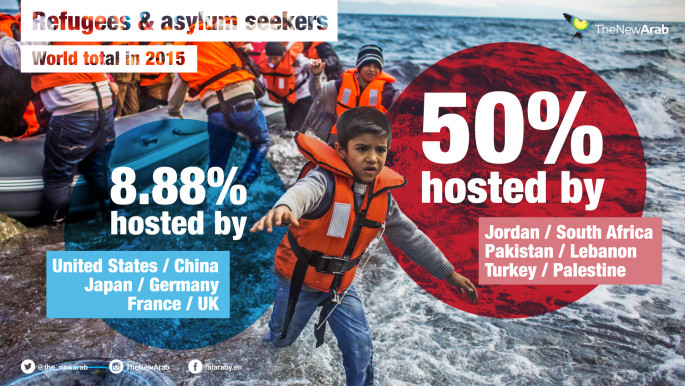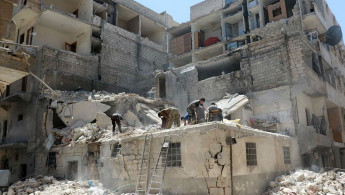Middle East economies nose-dive since Arab Spring: IMF
Middle East economies have nose-dived since the Arab Spring.
Wars, civil strife and the biggest refugee crisis since the Second World War has caused growth to plummet and has decimated labour markets, a report by the International Monetary Fund has found.
"Much of the productive capital in conflict zones has been destroyed, personal wealth and income losses are enormous, and human capital deteriorates with the lack of jobs and education," said the IMF's managing director, Christine Lagarde.
The report lays out the economic costs of war for countries both plagued by conflict or bordering countries that have felt the burden.
After four years of civil war, Syria's GDP has fallen by more than half.
Damage
War damage to Syria's physical capital amounts to $137.8 billion, or 230 percent of pre-war GDP, the report said, and, with 470,000 killed, 6.6 million displaced and five million having fled, the country has lost about 50 percent of its 2010 population.
Yemen has lost 25-35 percent of its GDP in 2015 alone. Since fighting began in March 2015, it has lost $20 billion in infrastructure.
Libya, where oil output dropped as a result of the closure of pipelines and oil facilities, saw economic activity fall by 24 percent in 2014.
Around 4.4 million people are internally displaced in Iraq, and 2.5 million in Syria, representing a significant brain drain from conflict countries.
The West Bank and Gaza economy has been virtually stagnant for 20 years, contrasting with nearly 250 percent average growth in other MENA countries in that period, offering a longer-term view on what can happen to growth in a fragile situation.
Burden
The IMF report followed World Bank research which said the burden of large numbers of refugees and displaced persons was largely borne on the shoulders of poor countries.
Governments could also be tempted to tweak policies to boost growth, by controlling exchange rates and bias rules and taxation in favour of friends and against foes.
Meanwhile, public services deteriorate, with neighbouring countries heavily impacted as well.
For example Lebanon has enrolled half the Syrian refugee population's children in its schools, swelling classroom sizes and reducing the quality of education.
"To varying degrees, these countries face large numbers of refugees, weak confidence and security and declining social cohesion that undermines the quality of institutions and their ability to undertake much-needed economic reforms," the IMF report said.
Change
All of this called for change, the report said: more humanitarian aid but also a coordinated effort between relief work and development assistance.
If and when peace comes, reconstruction will require "sizable financing" largely surpassing damaged and indebted countries' ability to collect revenues.
Lagarde estimated that even with a relatively high annual growth rate of 4.5 percent, it would take Syria more than 20 years just to rebound to its 2010 pre-conflict GDP level.





 Follow the Middle East's top stories in English at The New Arab on Google News
Follow the Middle East's top stories in English at The New Arab on Google News
![The UAE is widely suspected of arming the RSF militia [Getty]](/sites/default/files/styles/image_330x185/public/2024-11/GettyImages-472529908.jpg?h=69f2b9d0&itok=Yauw3YTG)
![Netanyahu furiously denounced the ICC [Getty]](/sites/default/files/styles/image_330x185/public/2024-11/GettyImages-2169352575.jpg?h=199d8c1f&itok=-vRiruf5)
![Both Hamas and the Palestinian Authority welcomed the ICC arrest warrants [Getty]](/sites/default/files/styles/image_330x185/public/2024-11/GettyImages-2178351173.jpg?h=199d8c1f&itok=TV858iVg)